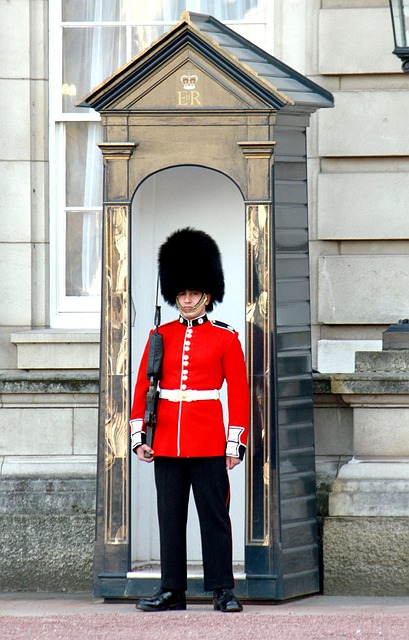In the digital age, surveillance technologies pose significant risks to privacy, especially for royalty and nobility requiring executive protection. Advanced encryption techniques, secure communication channels, access control systems, biometrics, and discreet observation points are employed to safeguard their sensitive conversations, residences, and travel. Anonymity and pseudonyms further protect their identities, fostering open communication and decision-making without fear of invasion or monitoring.
In an era where surveillance has become ubiquitous, safeguarding sensitive communications is more critical than ever. This article explores comprehensive anti-surveillance measures designed to protect royalty and nobility from intrusions on their privacy. We delve into various strategies, including advanced encryption techniques, robust physical security, and the use of anonymity and pseudonyms. Understanding the evolving threat landscape, especially for high-profile individuals, necessitates these unique considerations in executive protection for royalty and nobility.
Understanding the Threat: The Rise of Surveillance and Its Impact on Privacy
In today’s digital age, surveillance has become an increasingly pervasive force, posing a significant threat to privacy. The rise of advanced technologies, such as sophisticated tracking devices and data collection practices, has made it easier than ever for unauthorized parties to monitor and access sensitive information. This is particularly concerning for individuals who require executive protection, especially royalty and nobility, whose communications often contain confidential and potentially dangerous insights.
The impact of surveillance on privacy is profound. It erodes the trust between individuals and their conversations, creating an atmosphere of suspicion and fear. For those in high-profile positions, this can hinder open dialogue and decision-making processes, as they become cautious about sharing sensitive details. Understanding these threats is the first step towards implementing effective anti-surveillance measures to safeguard communications, ensuring that privacy remains a cornerstone of secure interactions.
Executive Protection for Royalty and Noble Families: Unique Considerations
Executive Protection for royalty and noble families presents unique challenges due to their heightened visibility and potential targets. These individuals often face threats from various quarters, necessitating specialized security measures beyond conventional methods. Their communications, both personal and official, must be protected against unauthorized surveillance, requiring advanced encryption technologies and secure communication channels.
Specialized executive protection teams must be trained to handle the unique dynamics of royal and noble families, ensuring not only their physical safety but also the secrecy of their conversations. This involves discreetly integrating advanced surveillance countermeasures into their everyday routines, such as employing encrypted phones and secure digital platforms for sensitive discussions. Moreover, these protections extend to the family’s residence and travel, requiring meticulous planning and a deep understanding of potential risks specific to their stations.
Advanced Encryption Techniques to Secure Sensitive Communications
In today’s digital age, where information is exchanged at lightning speed, securing sensitive communications has become paramount, especially for high-profile individuals such as royalty and nobility. Executive protection for this elite group often involves employing advanced encryption techniques to safeguard their conversations from prying eyes. By leveraging complex cryptographic algorithms, these methods ensure that even if data is intercepted, the content remains unreadable without the proper decryption keys.
One such technique is end-to-end encryption, where only the sender and receiver have access to the necessary keys for decoding. This approach mirrors a personal conversation, ensuring no third party can listen in or decrypt the message. In the context of executive protection, this technology is instrumental in preserving privacy during high-level meetings, secure calls, and data exchanges, thereby mitigating risks associated with surveillance.
Physical Security Measures: Safeguarding Locations and Devices
Physical security measures play a pivotal role in safeguarding sensitive communications from unwanted surveillance. In the world where privacy is paramount, especially for high-profile individuals like royalty and nobility, protecting physical locations and devices is an essential step. Executive protection services often incorporate robust strategies to ensure the confidentiality of conversations and data. This includes implementing access control systems, biometrics, and advanced encryption technologies at both fixed and mobile sites.
By securing buildings with state-of-the-art surveillance equipment, secure entry protocols, and discreet observation points, these measures significantly deter unauthorized access. Similarly, when it comes to devices, using encrypted communication channels, secure hardware, and specialized software helps protect information during transmission and storage. This level of physical security is crucial for maintaining the privacy and integrity of conversations, ensuring that royalty and nobility can communicate freely without fear of intrusion or surveillance.
Anonymity and Pseudonyms: Tools for Discretion and Privacy
Anonymity and pseudonyms play a pivotal role in safeguarding sensitive communications, especially for individuals who require executive protection, such as royalty and nobility. These tools offer a layer of discretion and privacy, making it difficult for unauthorized parties to trace or monitor interactions. By adopting aliases or encrypted communication channels, individuals can protect their identities while engaging in confidential discussions.
In the context of executive protection, this practice is particularly crucial to prevent stalking, harassment, or surveillance by hostile entities. Pseudonyms allow for secure coordination among security teams and trusted associates without leaving a digital footprint that could compromise operations. Anonymity also fosters an environment where individuals can freely express sensitive information, knowing their privacy is respected, thereby enhancing the effectiveness of protection measures.
In an era where surveillance has become a ubiquitous tool, safeguarding sensitive communications requires a multi-layered approach. From understanding the evolving threat landscape to implementing advanced encryption techniques and physical security measures, each component plays a vital role in protecting privacy. For royalty and noble families, executive protection takes on unique dimensions, necessitating tailored strategies. Anonymity and pseudonyms offer additional discretion, reinforcing comprehensive anti-surveillance measures that ensure confidentiality in an increasingly interconnected world.
